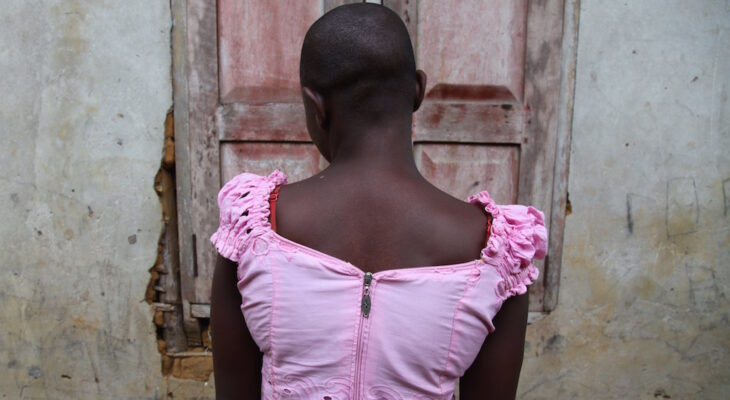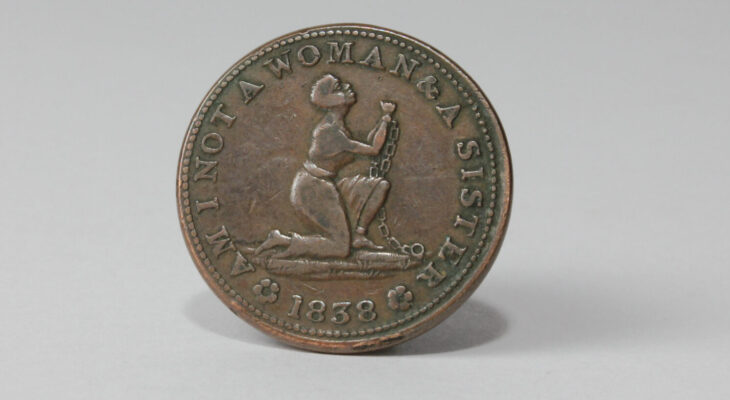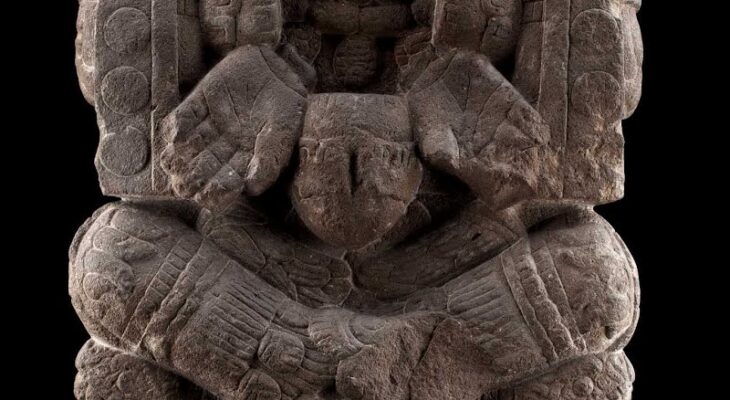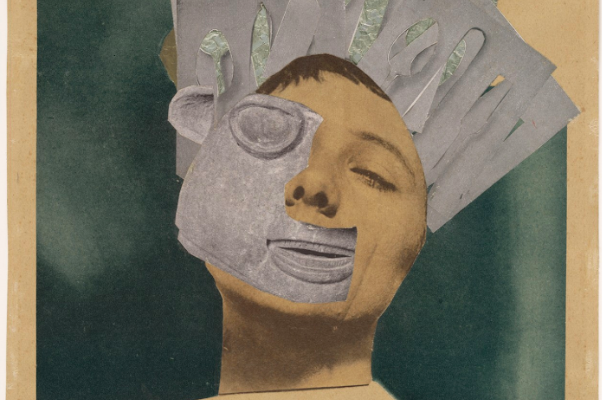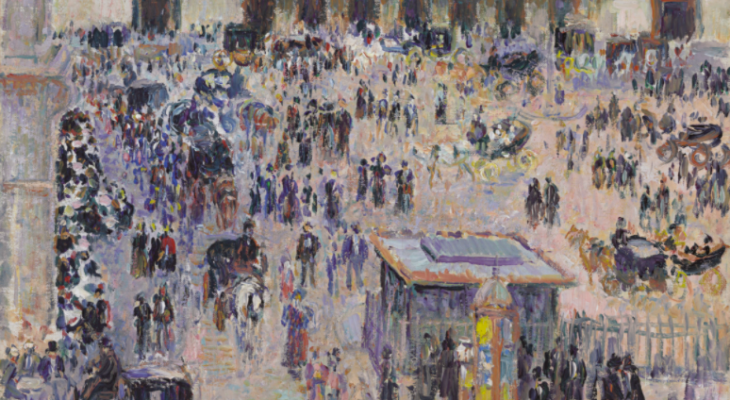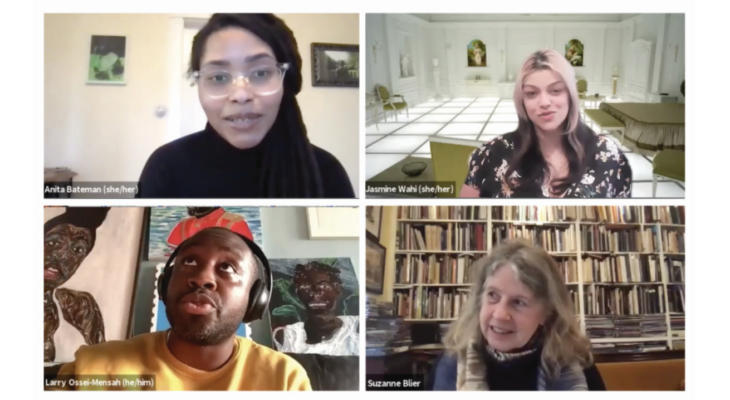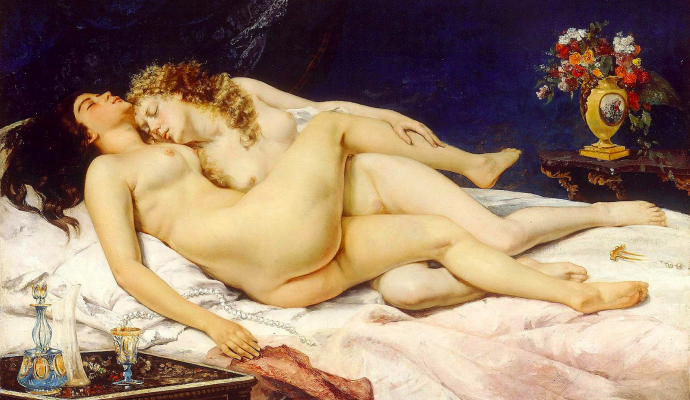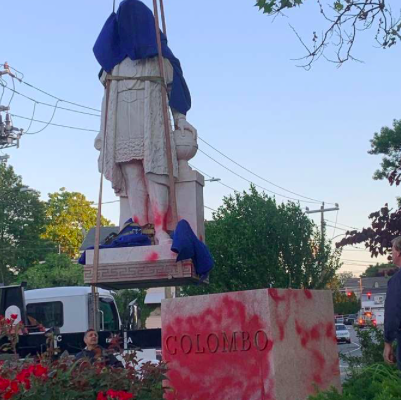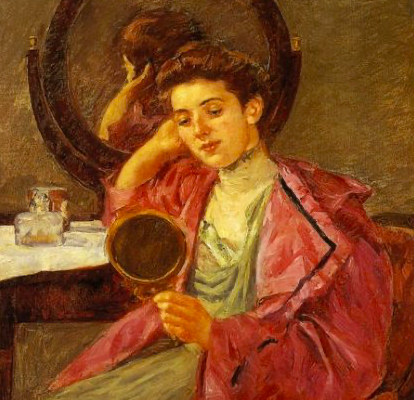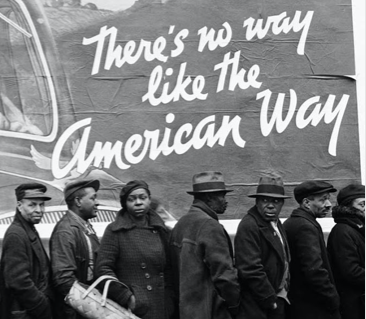Marley Reedy (Class of 2024) explores how artists in the current Limits of Visibility exhibition evoke the empowerment of being seen.
Am I Not a Woman and a Sister?
A rare anti-slavery medallion illuminates the complex relationships between the 19th-century abolitionist movement and the struggle for women’s rights.
Why Did Aztec Goddesses Lose Their Heads?
Decapitation was a punishment for gender nonconformity, according to Ellie Reder (Class of 2025).
Collaging a Racial Other: Hannah Höch’s Indian Dancer (1930)
Eliza Browning (Class of 2022) examines a Bekom mask from Cameroon, and its appropriation by the German Dadaist Hannah Höch.
A Train Station in Paris Connects Impressionism with Anarchist Politics
Using a Paris postcard as an ideological contrast, Whitney O’Reardon (Class of 2022) suggests how Pissarro embedded politics in his rendering of an urban crowd at Gare St. Lazare (1893).
Brick by Brick: Building Anti-Racist Arts Organizations
How do we create more just and equitable arts organizations? How can we use the past to build a new architecture of ideas? On April 6, ARTHive helped sponsor an online conversation about these questions and more.
Lovers, Sleepers and the Bliss of Female Desire
Emily Gray (Class of 2022) unpacks voyeurism and homoeroticism in two related images by the French artists Gustave Courbet and Achille Devéria
Constructing Whiteness
Eliza Browning (Class of 2022) explores the complex histories of a controversial Christopher Columbus statue and its site, in New London, CT. What can it tell us about race and the politics of Italian-American identity?
Women on Display
Calais Mustoe (Class of 2021) examines the sexual politics of looking in Mary Cassatt’s Antoinette at Her Dressing Table (1909)
No Way Like the American Way: But for Whom?
Emi Cormier (Class of 2020) analyzes the racial politics of Margaret Bourke-White’s photographs of the 1937 Ohio River Flood.

